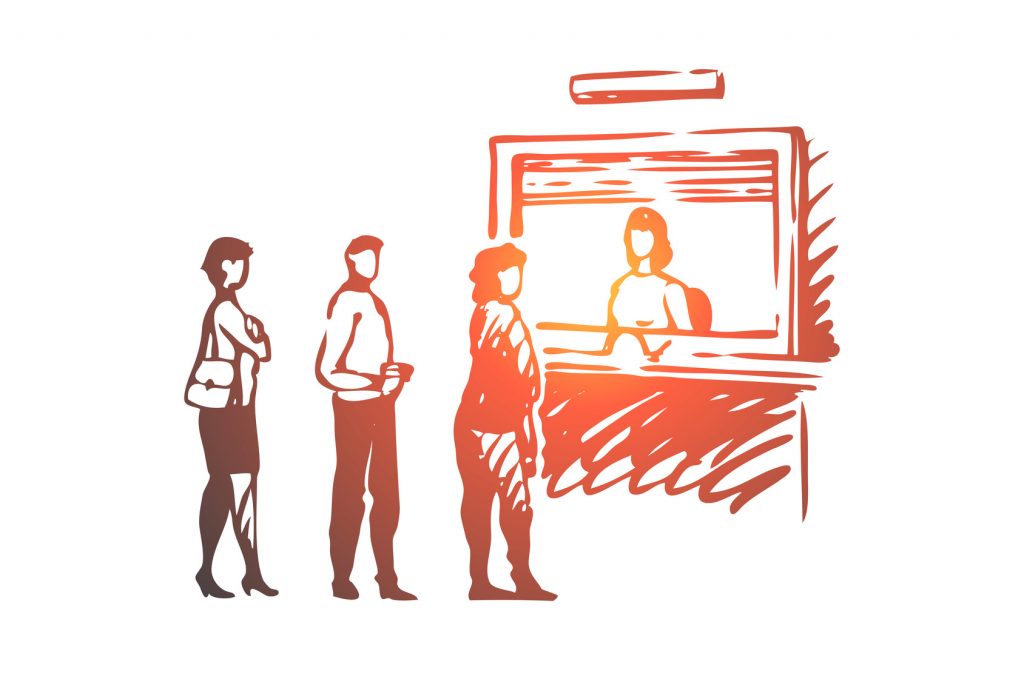Why COVID-19 could spur the next phase of bank branch evolution
The COVID-19 pandemic has disrupted the financial habits of millions of Americans – for better and for worse. Whether they’re budgeting how to get by on unemployment benefits or looking to pay down debt with their stimulus checks, many banking customers need guidance to deal with unanticipated financial situations.
There’s an obvious place they could look to for guidance: their local bank branches. Trusted with the savings and everyday spending of millions of customers, retail banks are ideally positioned to own the conversation around budgeting, savings, and debt reduction.

There’s an obvious place they could look to for guidance: their local bank branches
According to a 2018 MaritzCX survey, only about a third of American consumers trust banks’ motives and capability to help them with financial decisions – but the COVID-19 pandemic could change that. By creating unprecedented demand for financial guidance and advice, this crisis could accelerate bank branches’ transformation away from just hosting transactions and toward a more advisory model. That shift would have great benefits for both customers and banks.
The advisory evolution
This shift in the function of bank branches has been underway for decades. As more transactions occur automatically – whether at an ATM or online – branch foot traffic has dropped. But that doesn’t mean branches have become obsolete. Even in the digital age, they’re still the best place to tie products to customer needs.
But what should the next stage of the branch’s evolution look like? Banks have experimented with different models. Some have redesigned branches to imitate retail stores, while others have started to offer setup help and tech support similar to Apple’s Genius Bar.
However, the advisory model is an obvious direction for branches. It leans into the biggest advantage of a brick-and-mortar location: the potential to develop human relationships that make the overall banking relationship stickier. Fifty years ago, customers went into their local branch every week to deposit paychecks or pick up cash. Branch staff likely knew customers by name. A branch focused on advisory might not fully replicate the depth of that relationship, but it will build customers’ trust in and attachment to the bank. And unlike transactions, which are highly commoditised, offering advice is also an opportunity to differentiate a bank’s offerings from the competition.
The longer-lasting customer relationships built by advisory also create the opportunity to cross-sell customers new products as their needs evolve. That often means helping customers borrow when they’re young and have few assets, then transitioning to helping them save and invest as they get older. A bank loses revenue on a customer if they pay down their debt – but not if the newly debt-free customer is putting larger deposits in the same bank. Building more lasting relationships is a win-win for both customers and banks.
Two opportunities to seize
Until now, the progress toward an advisory model has been gradual. But the COVID-19 pandemic created opportunities for swifter action by creating two main groups in need of budgeting and saving advice.
- People who are out of work due to COVID-19: Helping out customers in need is always the right thing to do. But the pandemic has created a unique population of highly employable people who have been thrust into economic chaos by furloughs or layoffs. Bank branches have an opportunity to cement lifelong relationships with these customers by offering assistance now – and reaping the benefits as these individuals return to the workforce and continue to advance their careers. Advice on budgeting and accessing government benefits will be particularly important to this group.
- People who have extra funds due to COVID-19: Paradoxically, the same circumstances that thrust many Americans out of work has given others an unexpected windfall. For those who are still employed, government stimulus checks have padded their bank accounts. Many are also seeing savings due to reduced spending on dining out or entertainment during shelter-in-place orders. Bank deposits ballooned by $1 trillion in Q1 2020 – a record-breaking number that suggests many customers are saving their extra cash instead of spending it. Banks have another great opportunity to build relationships by coaching these customers on how to use their savings for debt reduction or to set up emergency funds.
Bank branches that advise both these groups during the pandemic will develop deep, lifelong relationships with customers. It’s a great reason to accelerate branches’ transformation from places to transact to places to receive guidance and advice.
The future of bank branches
Even with the acceleration from COVID-19, bank branches won’t transition to an advisory model overnight. There will be a transitional period as banks retrain existing branch staff or hire professionals with experience in advisory roles. The most important thing is for banks to take advantage of the current opportunity and not hesitate. Those that act now will build lasting relationships with customers – while those that don’t might get left behind.











































